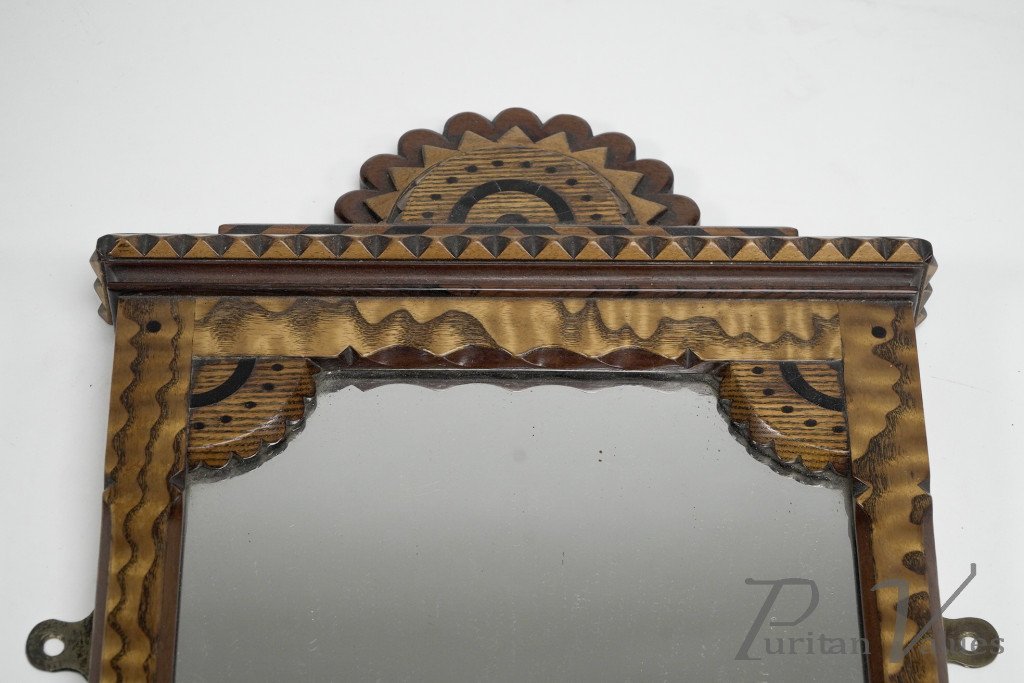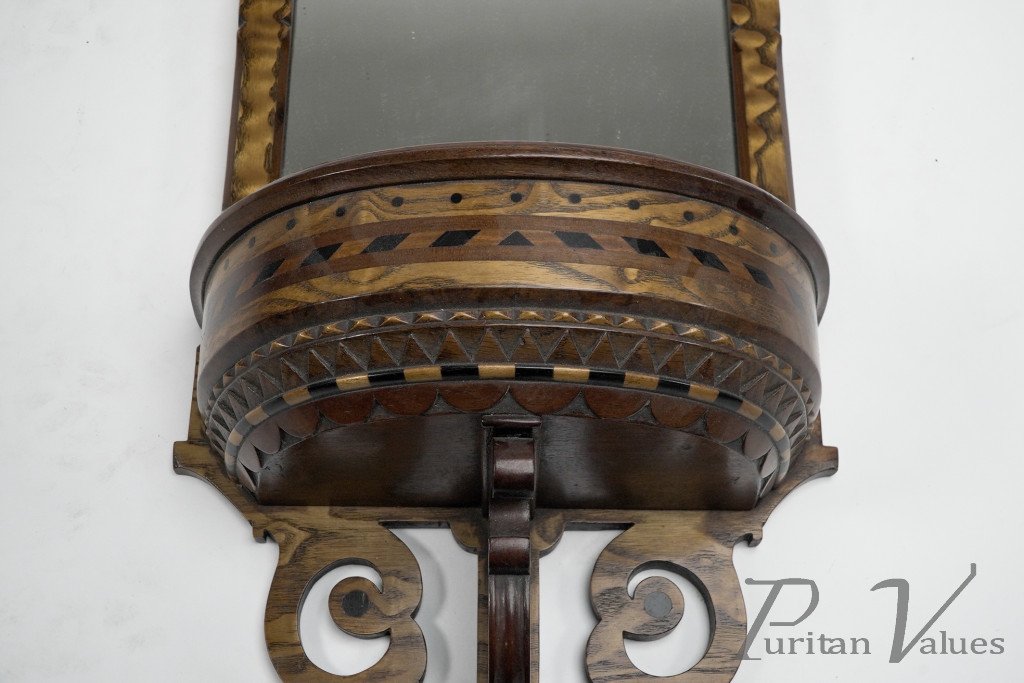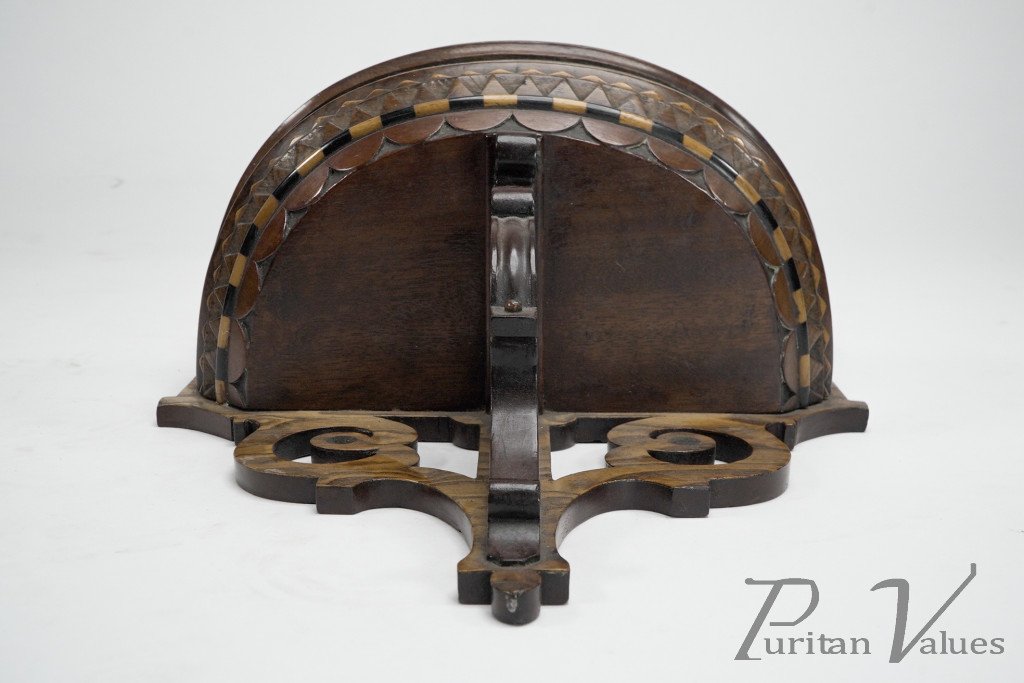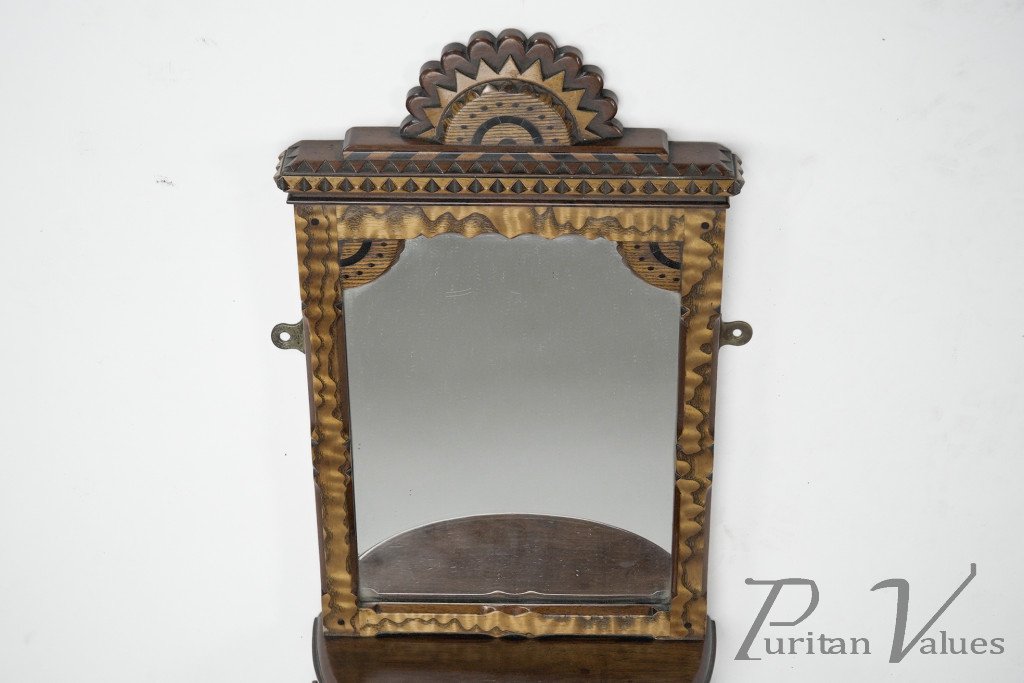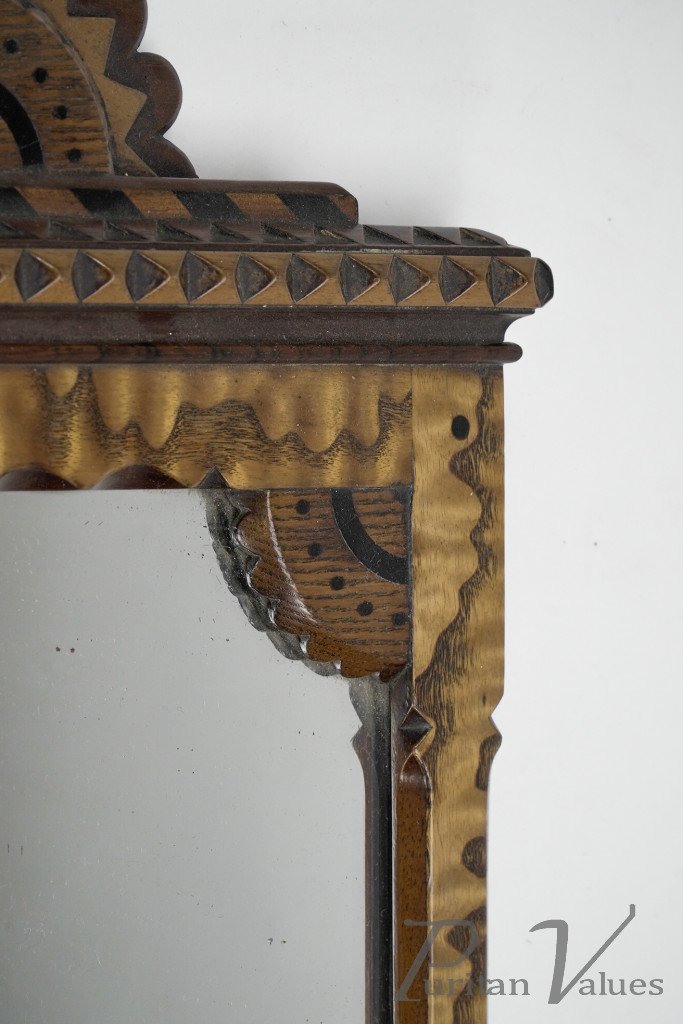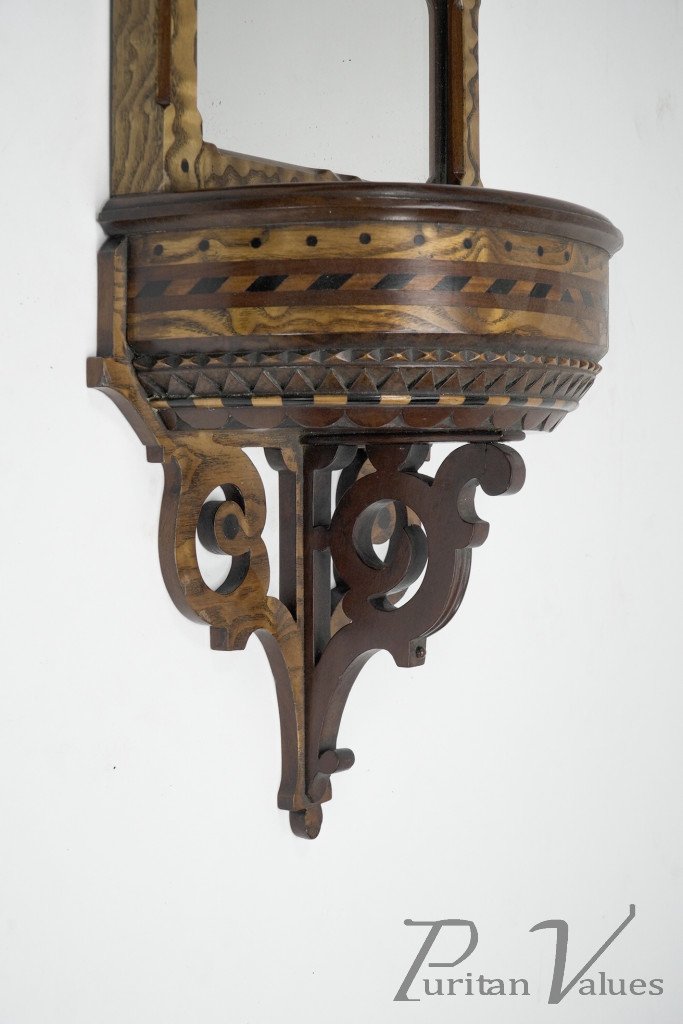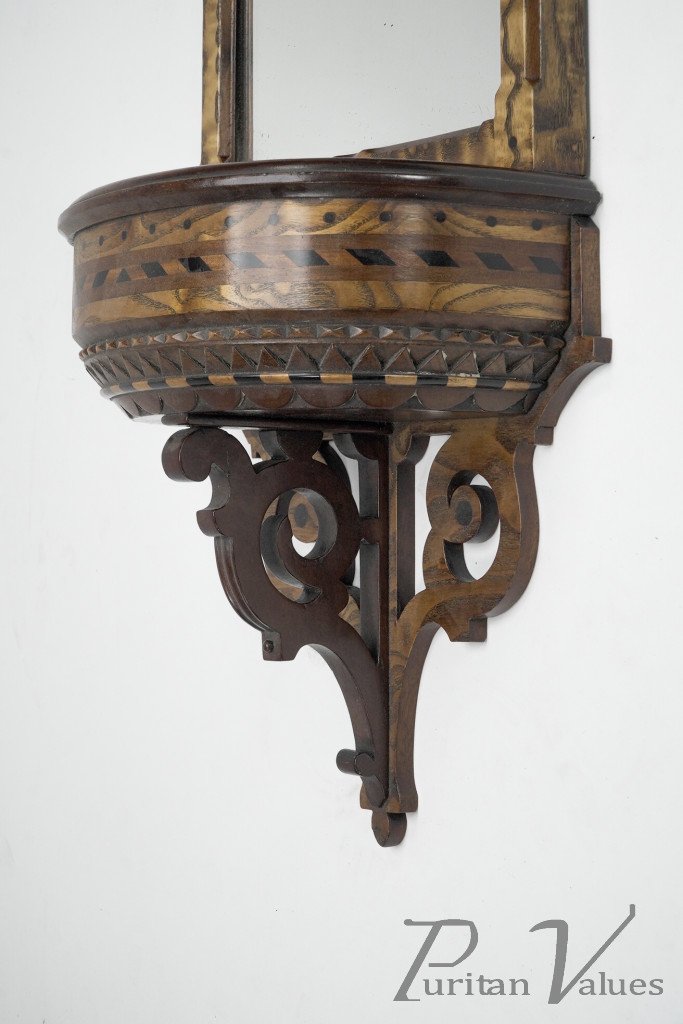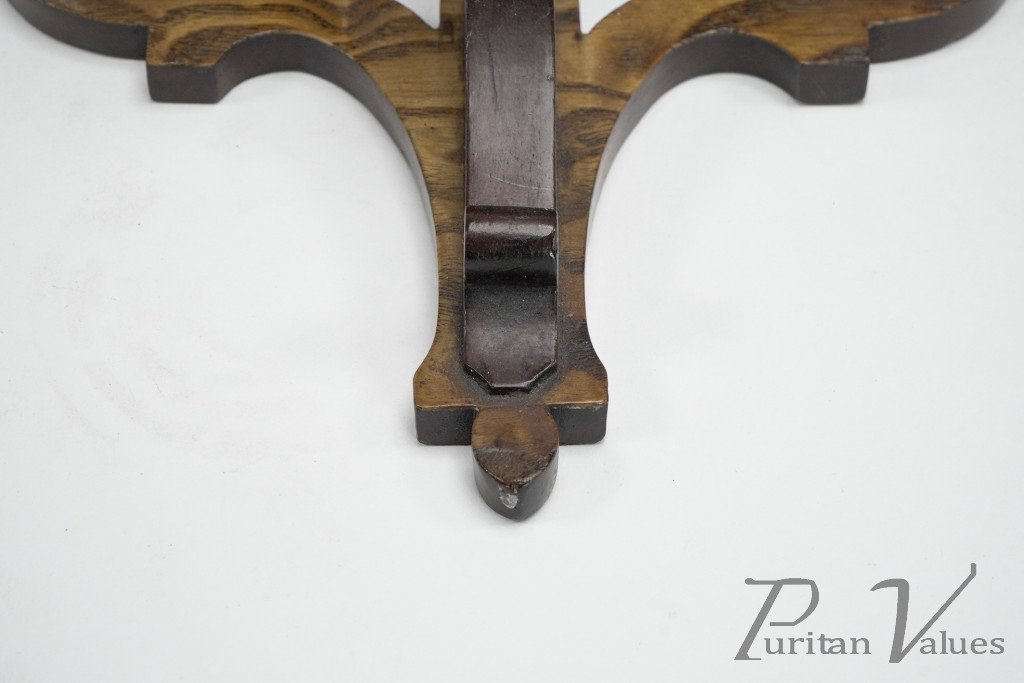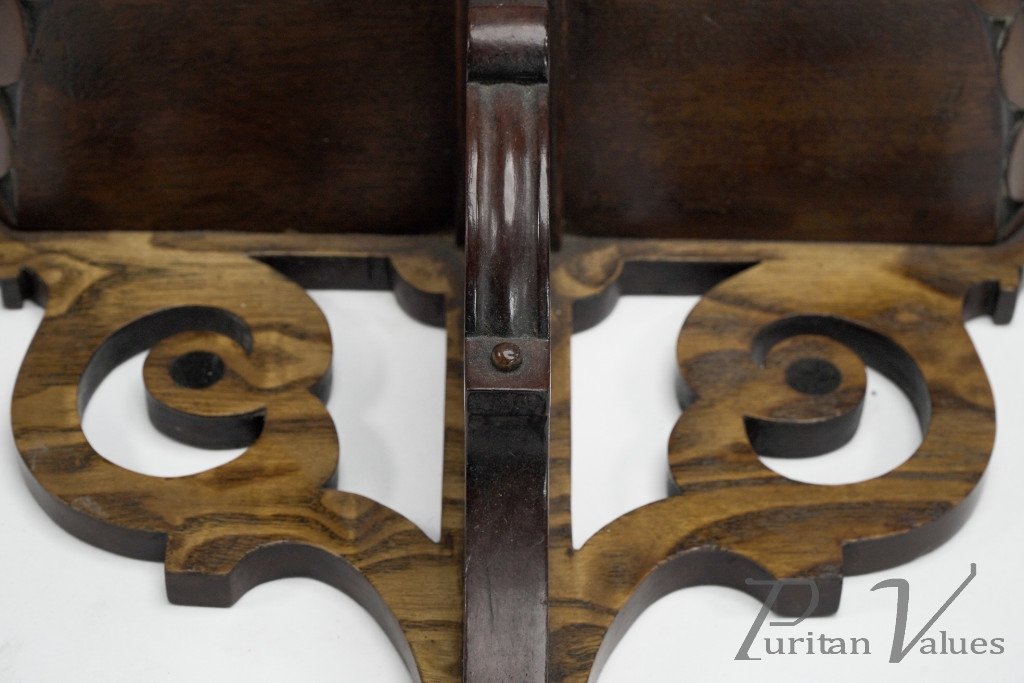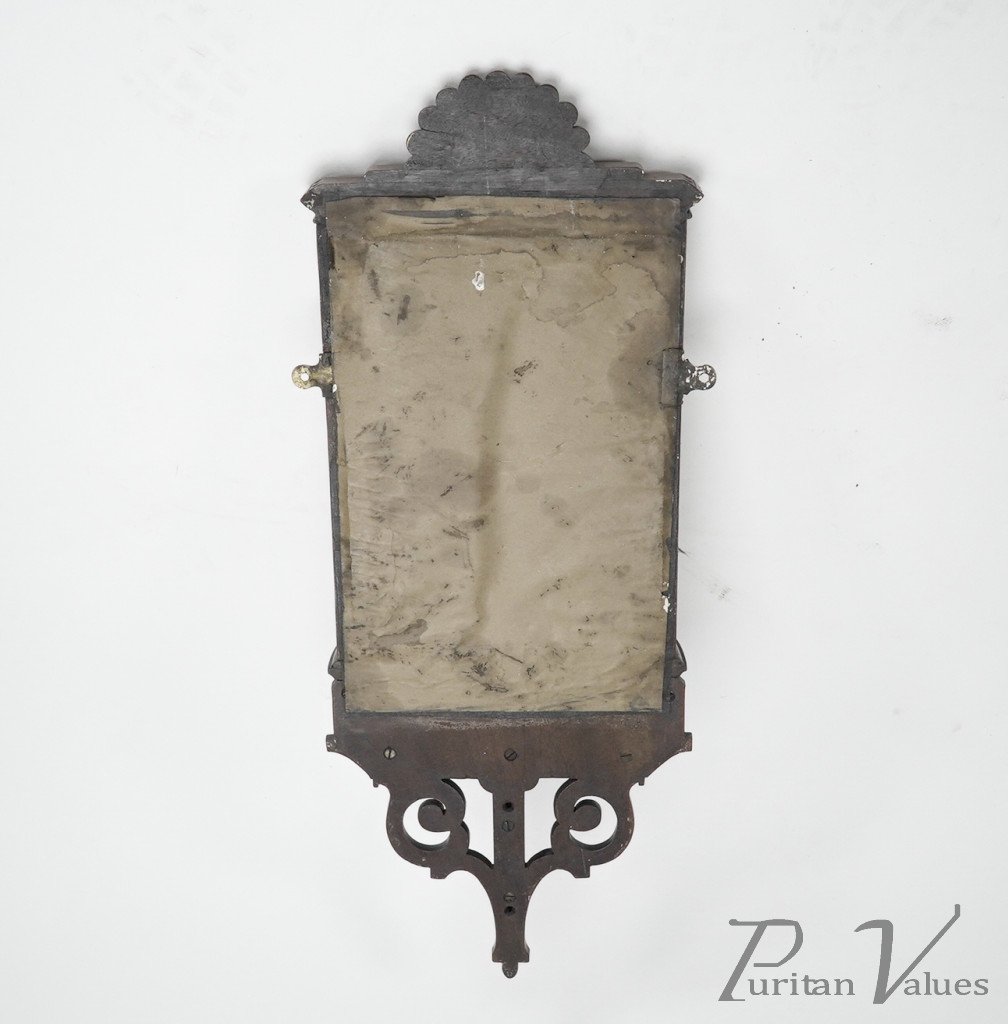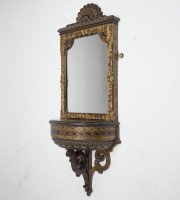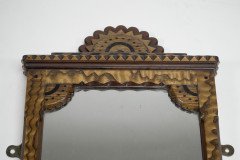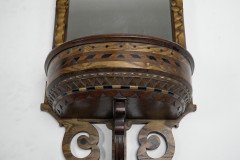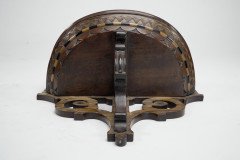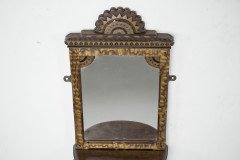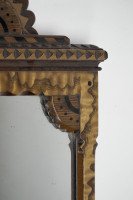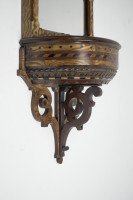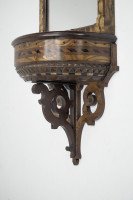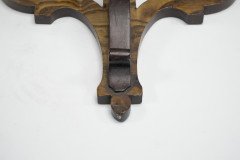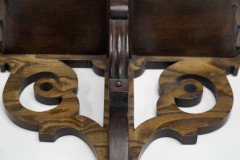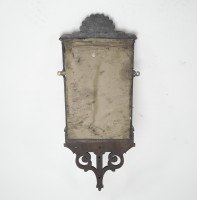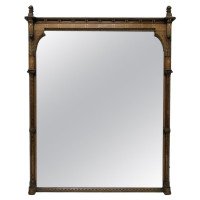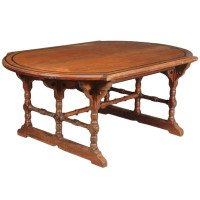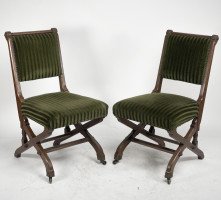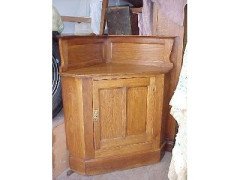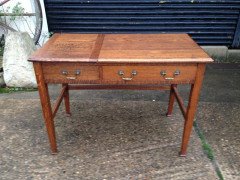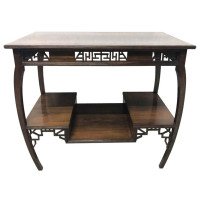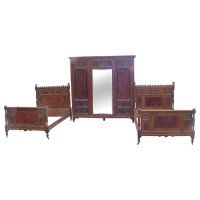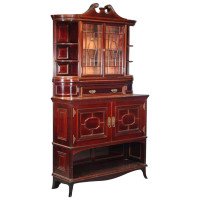Charles Bevan, Marsh Jones & Cribb. Aesthetic Movement Exhibition Quality Shelf.
POA
Width: 12 in (30.48 cm)
Depth: 6.5 in (16.51 cm)
1870-1879
About this piece
Charles Bevan, for Marsh Jones & Cribb. An exceptional English Aesthetic Movement exhibition quality wall shelf. executed by a master craftsman of the period, made as a showpiece using an array of specimen woods. The main body looks to be made from Hungarian Ash with a floral crown made from Walnut to the upper back, then Satinwood crowned with chevron details and ebonized dots and conforming semi-circular inlaid ebonized details, with quartered conforming details to the top mirror corners. The semi-circular shelf is made from Walnut with Hungarian Ash below, inlaid with ebonized and stained Beech or possibly Sycamore, continuing around the semi-circle with three separate types of carved mouldings to the lower section centred with a protruding bead moulded edge made up of individual pieces of rounded Ebonised and Boxwood details. The lower three scrolled supports are also made of Ash and the central scroll support is made from Mahogany. Originally known as “ Marsh and Jones: Medieval Cabinet Makers; of Leeds", they began making furniture around 1850 and became Marsh Jones and Cribb in 1867. They exhibited at the Paris Exposition in 1878. They employed Charles Bevan who in 1865 gave them licence to manufacture his successful ‘ New Registered Reclining Chair. Charles Bevan designed the furniture and interiors for the son of Sir Titus Salt for his marital home Saltaire which was all made by Marsh Jones and Cribb. Bruce James Talbert was also designing furniture for M JC in the 1870s and 1880s.


